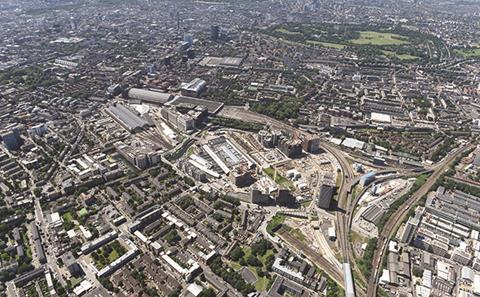A recent Movers and Shakers breakfast presentation by the LSE’s Tony Travers highlighted the huge competitive advantage London gains in the global market from its great estates, including The Crown Estate (dating back to 1066), Grosvenor, Howard de Walden, Portman and Cadogan to name some of the largest.

A recent Movers and Shakers breakfast presentation by the LSE’s Tony Travers highlighted the huge competitive advantage London gains in the global market from its great estates, including The Crown Estate (dating back to 1066), Grosvenor, Howard de Walden, Portman and Cadogan to name some of the largest.
They are so much part of the fabric of London life that we tend to undervalue all this heritage on our doorstep. We were mildly surprised when millions around the world tuned in to Prince Harry and Meghan Markle’s wedding, to observe our uniquely British pageantry and aristocracy at play. In real estate terms, this is a huge point of differentiation for London.
In contrast, New York and Hong Kong’s real estate dynasties are relative newcomers and lack the history lurking behind our every street name. As well as the eponymous Grosvenor, Cadogan and Portman squares you only have to stray slightly off Marylebone High Street to find the site of the former Ragged School in the delightfully named Grotto Passage.
Aristocratic owners began building on open land west of the City in the 17th century. As Travers pointed out, the landed estates have not always been held in high esteem; their elitist nature and feudal holding of land in perpetuity didn’t play well as the UK became more democratised.
My early career was spent in offices in the Grosvenor heartlands. I remember being taken on a tour of the Mayfair and Belgravia estate by the estate manager, who knew all the tenants by name and was greeted like a lord of the manor. He explained that Grosvenor had always maintained social housing and the Peabody Estate buildings still sit happily alongside higher-value residential, retail and offices, creating a feeling of community.
Stewardship was always the name of the game and the estate’s long-term perspective is now aspired to by our new generation of estate owners, such as King’s Cross and Canary Wharf.

As Steve Norris, Soho Estates’ chairman and a Movers and Shakers panellist, noted: “The estates act in a way that isn’t driven by quarterly NAV or profit but looks to the long-term value the estate can generate.”
This is good for both sides. The estates benefit from a strategy that looks to long-term benefit, not short-term earnings. The people who run the estates get to know them intimately and understand how to optimise whatever their part of London offers.
Marylebone High Street is a classic early model of estate placemaking, subsequently adopted by other London estates. Andrew Ashenden, then chief executive of the de Walden Estate, wanted to restore the street, which had become run-down with empty shops, by attracting small, independent operators rather than the chains and supermarkets that created a ‘cloned high street’ effect. He sourced a carefully curated selection of specialists such as butcher The Ginger Pig and The Fromagerie and other speciality shops, cafés and restaurants that gave a new lease of life.

More recently, the Crown’s £1bn Regent Street regeneration brought new vibrancy to the West End.
Unlike the Crown, de Walden didn’t control the whole of Marylebone High Street and fragmented ownership affects most UK high streets, making repositioning difficult. But business improvement districts can play a key role in bringing owners and occupiers together.
An example is New West End Company’s £10m Bond Street transformation, to be completed this year. Chief executive Jace Tyrrell said: “Collaboration between the estates, private owners, institutional investors with occupiers and local authorities is key to any London high street’s success. Property owner BIDs are a formidable platform to bring these interests together.”
Perhaps Brexit will provide the impetus for a new pride in our British heritage, which is envied by other cities and gives London and the UK a unique competitive edge.






























No comments yet